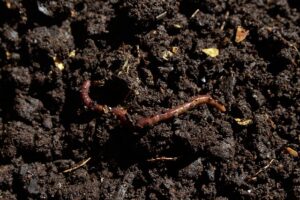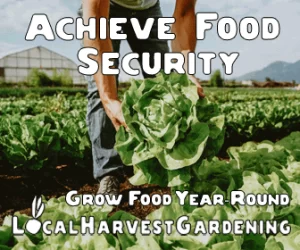Introduction
Trench composting is a method of enriching the soil by burying organic waste directly into the ground. This technique involves digging a trench or hole, filling it with kitchen scraps, yard waste, and other organic materials, and then covering it with soil. Over time, these materials decompose, creating a nutrient-rich environment for plant growth.
There are several benefits to this method of composting. Firstly, it is an excellent way to recycle kitchen and garden waste, reducing the amount of waste going to landfills. Secondly, trench composting improves soil fertility and structure, promoting healthier plant growth. Lastly, it is a cost-effective method of improving your garden, as it does not require the purchase of commercial fertilizers.
Materials Needed
To execute trench composting effectively, certain materials are necessary. These are:
- Kitchen Scraps: This includes fruit and vegetable peels, coffee grounds, and eggshells. These items are rich in nitrogen and break down quickly, making them excellent contributors to your compost.
- Yard Waste: Items like leaves, grass clippings and small branches are rich in carbon. They decompose slower but are essential for a balanced compost.
- A Shovel or Spade: This tool will be used for digging the trench.
- A Measuring Tape: To ensure that the trench is of the recommended depth – generally between 8 to 12 inches.
- Water: If your compost materials are dry, you’ll want to slightly moisten them to aid in the decomposition process.
Suitable and Unsuitable Items for Composting
Composting is a process that relies on organic, biodegradable materials. However, not all organic material is suitable for composting. While fruit and vegetable scraps, eggshells, coffee grounds, leaves, grass trimmings, and small branches are perfect for composting, several items should be avoided.
Unsuitable items include meat and dairy products, as they can attract pests and create unpleasant odors. Additionally, diseased plants, or plants treated with pesticides, should not be composted as they can spread disease or harmful chemicals. Lastly, pet waste should be avoided due to potential pathogens that can be harmful to humans.
Selecting a Site for Trench Composting
One of the first steps in setting up a trench composting system is selecting a suitable site. The location plays a significant role in the success of your composting project.
Factors to Consider When Choosing a Location
- Sunlight: The compost pile should be in a location that receives a balance of sun and shade. Too much sunlight can dry out the compost, while too little can slow down the decomposition process.
- Drainage: The site should have good drainage to prevent the compost from becoming too wet and water-logged.
- Accessibility: It should be easily accessible, making it easier to add materials and turn the compost when necessary.
- Space: Ensure there’s ample space for your composting needs, taking into consideration future expansion.
Ideal Conditions for Composting
The ideal conditions for composting involve a balance of green and brown materials in your compost pile, adequate moisture, and good air circulation. These will promote the growth of beneficial microorganisms, which are key players in the composting process. An ideal compost pile will have a sweet, earthy smell and will not attract pests. Remember to turn your compost regularly to encourage aeration and speed up decomposition.
Procedure for Trench Composting
Trench composting is a simple and effective method for composting kitchen waste directly in the garden. Follow these steps to get started:
- Dig a trench: The ideal size for your trench is about 1 meter (3 feet) wide and 1 meter (3 feet) deep. This size is large enough to hold a significant amount of compost material, but not so large that it becomes unmanageable.
- Add your compost materials: Layer your compost materials in the trench. Begin with a layer of brown material, like dried leaves or newspaper, then add a layer of green material, such as food scraps or grass clippings. Continue alternating layers until the trench is filled.
- Cover the trench: Once the trench is filled with layered compost materials, cover it with the soil you removed when digging the trench. This will help retain heat and moisture and prevent pests from accessing your compost materials.
Importance of Layering Materials
Layering materials in your compost pile is crucial for maintaining a good balance of carbon and nitrogen, which promotes efficient decomposition. Brown materials are rich in carbon, while green materials provide nitrogen. A good rule of thumb is to aim for a ratio of 3:1 brown to green materials.
Ideal Depth and Size of the Trench
The size of the trench you dig for trench composting depends on the amount of compostable waste you generate, but a depth of 1 meter (3 feet) is a good starting point. This depth allows for sufficient layering of materials and ensures that the composting process will heat up enough to kill any harmful organisms in the waste. The width of the trench should be manageable and allow for easy turning of the compost.
Maintenance of the Compost Trench
Maintaining a compost trench involves regular checks to ensure proper decomposition and prevent unpleasant odors or pest problems. Turn the compost every few weeks using a pitchfork or shovel. This aerates the pile and speeds up the decomposition process. Additionally, ensure the compost remains moist, but not drenched. If it appears dry, add water sparingly.
How to Care for the Compost Trench
Caring for your compost trench involves monitoring for proper decomposition, maintaining optimal moisture levels, and ensuring the trench does not attract pests. Add new materials in balanced layers and turn the compost regularly to assist decomposition. If the compost appears too dry, add water. If it’s too wet, add more brown materials to absorb excess moisture.
Troubleshooting Common Issues
Composting issues often boil down to balance. If your compost pile emits a foul odor, it may indicate an excess of green material. To correct this, add more brown material and turn the compost to integrate and aerate it. If the compost pile is not heating up, it may lack green material, moisture or size. Add more green material, sprinkle some water, or combine smaller piles. Always remember to maintain the compost pile’s balance for efficient decomposition.
Utilizing the Compost
Once your compost is ready, it can be applied in various ways to enrich your garden soil or you can plan your trench where you want to plant your garden and just plant into it once the compost is completely done decomposing.
If you decide to dig the compost out to use in your garden, just start layering again once the compost is dug out, leaving enough soil to cover the top when the trench is filled.
How to Know When Compost is Ready
Determining when compost is ready for use is an important step in the composting process. Finished compost is usually dark, crumbly, and has an earthy smell. It should no longer bear any resemblance to the original material. This process can take anywhere from 2 months to 2 years depending on composting conditions.
Ways to use the Compost in Gardening
Compost can be utilized in multiple ways in your garden. You can mix it into garden soil or potting mix to enrich the nutrient content. Using it as a mulch will not only provide nutrients but also help the soil retain moisture. Compost can also be used to make compost tea, a nutrient-rich liquid that provides an instant boost to plants when applied. Remember, compost is not a soil replacement, but a conditioner that enriches the soil and improves its structure.
Conclusion
In summary, trench composting presents an environmentally friendly solution to waste management, turning organic waste into a nutrient-rich soil conditioner. The process, although requiring patience, is relatively straightforward and adaptable to various conditions. It involves balancing ‘green’ and ‘brown’ materials, maintaining appropriate moisture, and ensuring sufficient aeration. The resulting compost has versatile applications in gardening, from enriching the nutrient content of soil and potting mix to serving as an effective mulch. By adopting such sustainable practices, not only do we contribute to waste reduction but also foster healthier soils and plants. Let’s continue working towards creating sustainable systems that enhance our environment and promote responsible waste management.


